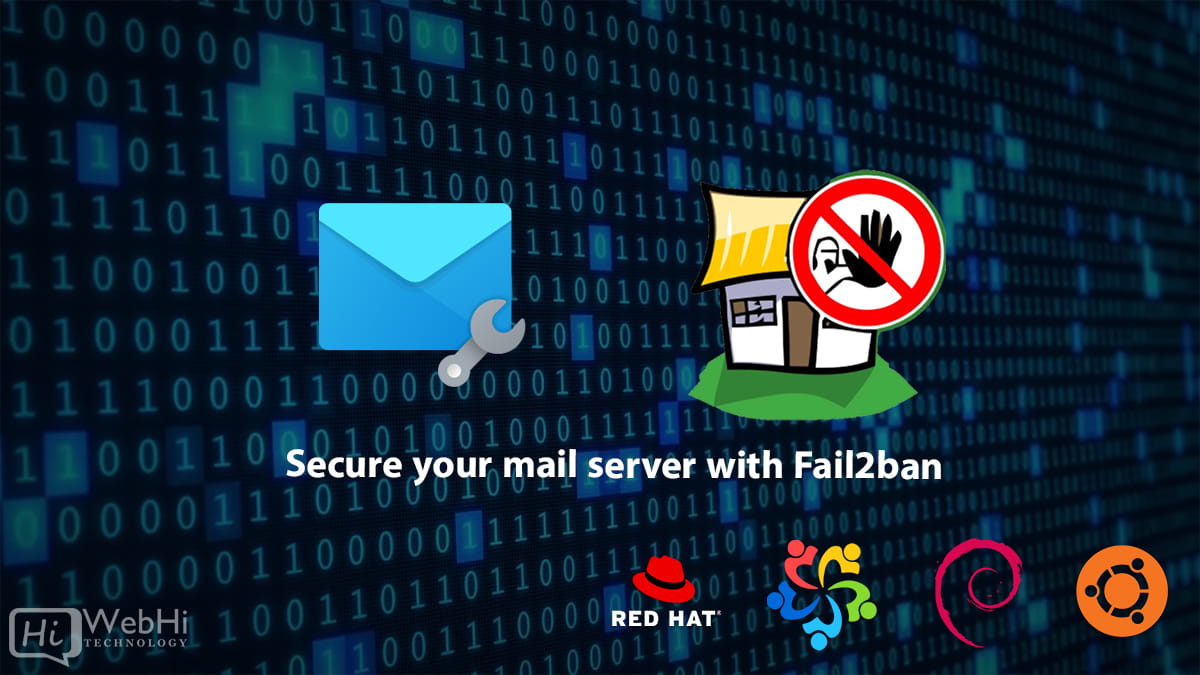
Protecting a mail server is critical in the modern digital landscape, where brute force attacks and spam exploits are a constant threat. Fail2ban is a robust open-source tool that helps protect your server from malicious activities by dynamically blocking IPs that exhibit suspicious behavior. This guide provides a comprehensive, step-by-step explanation of how to set up Fail2ban for mail server protection, ensuring enhanced email security.
What is Fail2ban and why use it for mail servers?
Fail2ban is an intrusion prevention software that monitors logs for suspicious activity and blocks offending IP addresses using firewall rules. It’s particularly useful for mail servers because:
- Prevents brute force attacks: Monitors failed login attempts and blocks IPs after a threshold is reached.
- Reduces spam: Works with Postfix and Dovecot to filter out abusive IPs trying to misuse your server.
- Flexible configuration: Allows custom jail definitions and integration with various services.
By setting up Fail2ban, you enhance your mail server’s resilience against attacks, safeguarding sensitive communications.
Prerequisites for setting up Fail2ban
Before diving into the installation, ensure the following prerequisites are met:
- A Linux server: Fail2ban supports distributions like Ubuntu, Debian, and CentOS.
- Root or sudo privileges: Required for installing and configuring Fail2ban.
- Mail server components: Ensure Postfix and Dovecot are installed and functional.
- Firewall setup: Confirm that a firewall like
ufworiptablesis active for Fail2ban to manipulate.
Install Fail2ban on your server
To begin, install Fail2ban from your Linux distribution’s default package repository.
For a more detailed installation guide follow this Guide on How to Install and Configure Fail2ban
On Ubuntu or Debian
Run the following command to update the repository and install Fail2ban:
$ sudo apt update
$ sudo apt install fail2ban -yOn CentOS or RHEL
Enable the EPEL repository and install Fail2ban:
$ sudo yum install epel-release -y
$ sudo yum install fail2ban -yVerify installation
Check if Fail2ban is installed correctly:
$ fail2ban-client --versionThis command outputs the version, confirming that Fail2ban is ready for configuration.
Configure Fail2ban default settings
Fail2ban’s configuration files are located in /etc/fail2ban. Avoid modifying the default jail.conf file directly; instead, create a local override file.
Create a local configuration file
Copy the default file:
$ sudo cp /etc/fail2ban/jail.conf /etc/fail2ban/jail.localThe jail.local file will override the default configuration and persist across updates.
Secure mail server services with Fail2ban
Protect Postfix
Postfix is a popular Mail Transfer Agent (MTA). Fail2ban protects it by monitoring its logs.
Configure Postfix jail
Open the jail.local file:
$ sudo nano /etc/fail2ban/jail.localAdd the following configuration to protect Postfix:
[postfix]
enabled = true
port = smtp,465,submission
filter = postfix
logpath = /var/log/mail.log
maxretry = 5- enabled: Activates the jail.
- port: Defines ports used by Postfix (
SMTP,SMTPS, andSubmission). - filter: Specifies the Fail2ban filter (
postfix.conf) to use. - logpath: Points to the Postfix log file.
- maxretry: Blocks an IP after 5 failed attempts.
Test Postfix logs
Ensure Postfix logs exist in /var/log/mail.log:
$ sudo tail -f /var/log/mail.logProtect Dovecot
Dovecot handles email delivery. Misconfigurations or brute force attempts can compromise its security.
Configure Dovecot jail
In jail.local, add the Dovecot section:
[dovecot]
enabled = true
port = pop3,pop3s,imap,imaps
filter = dovecot
logpath = /var/log/mail.log
maxretry = 5- port: Protects
POP3,POP3S,IMAP, andIMAPSprotocols. - filter: Uses the Dovecot filter for matching failed logins.
Verify Dovecot logs
Ensure logs are written to /var/log/mail.log:
$ sudo tail -f /var/log/mail.logCreate custom filters
Fail2ban uses filter definitions in /etc/fail2ban/filter.d/ to detect specific log patterns. You can customize these for additional protection.
Create a custom filter
To add stricter rules for Postfix, create a new filter file:
$ sudo nano /etc/fail2ban/filter.d/custom-postfix.confAdd regex rules for suspicious activity:
[Definition]
failregex = warning: .*: SASL authentication failed: .*$
ignoreregex =- failregex: Matches patterns of authentication failure.
- ignoreregex: Specifies patterns to ignore.
Enable and start Fail2ban
Enable Fail2ban to run at system boot:
$ sudo systemctl enable fail2banStart the service:
$ sudo systemctl start fail2banTest Fail2ban configuration
Testing ensures Fail2ban operates as expected.
Check active jails
List all active jails:
$ sudo fail2ban-client statusThis command displays enabled jails and their details.
Simulate a failed login
Attempt a login with incorrect credentials multiple times. Then check if the IP is banned:
$ sudo fail2ban-client status postfixMonitor Fail2ban logs
Fail2ban maintains logs for banned IPs and service activity.
View Fail2ban logs:
$ sudo tail -f /var/log/fail2ban.logFine-tune Fail2ban settings
Adjust settings for optimal performance:
- Ban time: Set how long an IP remains blocked:
bantime = 3600- Find time: Define the time window for counting failed attempts:
findtime = 600Conclusion
Setting up Fail2ban for mail server protection is an essential step in safeguarding your email infrastructure from attacks. By following this guide, you’ve configured Fail2ban to secure Postfix and Dovecot, created custom filters, and tested its functionality. With this setup, your mail server is well-equipped to handle unauthorized access attempts, ensuring uninterrupted and secure communication.
FAQs
How does Fail2ban protect mail servers?
Fail2ban monitors mail server logs for suspicious activity, such as repeated failed login attempts, and blocks the offending IP addresses using firewall rules.
What are common services Fail2ban protects?
Fail2ban commonly protects SSH, Postfix, Dovecot, Apache, and Nginx.
Can I customize Fail2ban filters?
Yes, Fail2ban allows custom regex filters to match specific log patterns for enhanced security.
How do I unblock an IP banned by Fail2ban?
Use the command:
$ sudo fail2ban-client unban IP_ADDRESSDoes Fail2ban replace a firewall?
No, Fail2ban complements a firewall by dynamically updating its rules based on suspicious behavior.
Is Fail2ban lightweight?
Yes, Fail2ban is efficient and consumes minimal resources, making it suitable for most servers.
